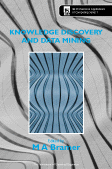
Modern computer systems are accumulating data at an almost unimaginable rate and from a very wide variety of sources: from point of sale machines in the high street to machines logging every cheque clearance, bank cash withdrawal and credit card transaction, to Earth observation satellites in space. Three examples will serve to give an indication of the volumes of data involved:
Alongside advances in storage technology which increasingly make it possible to store such vast amounts of data at relatively low cost, whether in commercial data warehouses, scientific research laboratories or elsewhere, has come a growing realisation that such data contains buried within it knowledge that can be critical to a company's growth or decline, knowledge that could lead to important discoveries in science, knowledge that could enable us accurately to predict the weather and natural disasters, knowledge that could enable us to identify the causes of and possible cures for lethal illnesses, knowledge that could literally mean the difference between life and death. Yet the huge volumes involved mean that most of this data is merely stored - never to be examined in more than the most superficial way, if at all. Machine learning technology, some of it very long established, has the potential to solve the problem of the tidal wave of data that is flooding around organisations, governments and individuals.